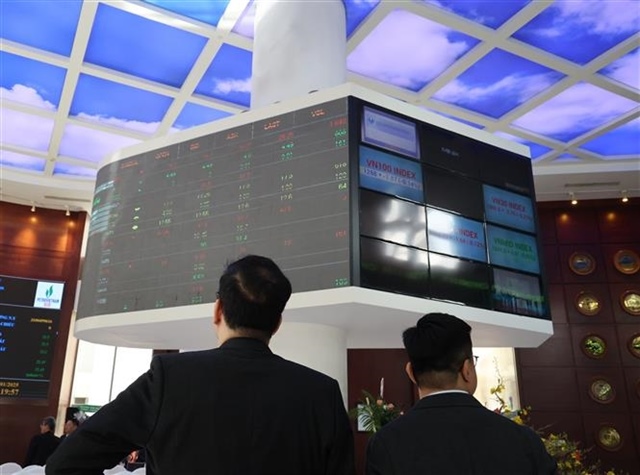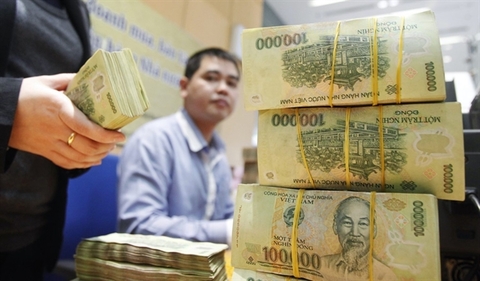Vietnam's bond market expands to nearly $100 billion
Vietnam's bond market expands to nearly $100 billion
The growth was driven by both the Government and corporate bond segments.
Vietnam’s local currency bond market (LCY) grew by 8.1% at the end of August from the previous quarter to US$99.5 billion, and annual growth expanded by 31.6% from a year earlier, according to the latest report of the Asian Development Bank (ADB)’s Asia Bond Monitor.

Vietnam's bond market size is fast approaching the US$100-billion mark. File photo |
“The faster expansion was driven by both the government and corporate bond segments,” stated the report.
Government bonds increased 7.4% from the previous quarter, driven by growth in central bank bills, to $69.8 billion. Corporate bonds climbed 9.5% from the previous quarter to about $30 billion, driven by hefty issuance.
At the end of June, the outstanding bond stock of Vietnam’s top 30 corporate issuers totaled VND414.7 trillion ($17.5 billion), comprising 60.1% of the LCY corporate bond market.
Vietnam’s top corporate bond issuers were predominantly banks and property firms, which collectively held 55.5% of the total LCY corporate bonds outstanding at the end of June. State-owned Bank for Investment and Development of Vietnam (BIDV) remained the top issuer, with an outstanding bond stock of VND53.4 trillion ($2.26 billion) at the end of June. BIDV accounted for 7.7% of the total corporate bond stock of Vietnam at the end of the second quarter.
Long-term bond yields decline in emerging East Asia
In the region, long-term bond yields in emerging East Asia declined between 15 June and 24 August amid mounting risks and a dimming economic outlook, even as financial conditions eased modestly.
Yields of 10-year local currency government bonds dropped while yield curves flattened. Both typically signal that investors expect slower economic growth. Currencies in the region continued to depreciate against the US dollar amid the weaker outlook.
Financial conditions in emerging East Asia eased moderately from mid-July to mid-August, when equity markets rallied, risk premiums narrowed, and portfolio inflows returned amid speculation that the US Federal Reserve (Fed) would slow the pace of interest rate hikes. However, ongoing and renewed risks have continued to weigh down investor sentiment, including concerns about persistent inflation, faster-than-expected US monetary tightening, lingering impacts of the Covid-19 pandemic, a greater-than-expected slowdown in China, and the protracted fallout from the Russian-Ukraine conflict.
“Market optimism over a milder Fed tightening supported a modest improvement in financial conditions,” said ADB Chief Economist Albert Park. “But this seems to have been short-lived, as the Fed has been pretty clear in recent weeks that further interest rate hikes are likely. Financial conditions in the region may continue to tighten.”
The region’s bond market saw record-high issuance in the second quarter of this year, driven mostly by China’s efforts to stimulate the economy. The regional bond stock rose to $22.9 trillion at the end of June. Issuance in economies belonging to the Association of Southeast Asian Nations (ASEAN) rose 10.3%, expanding the bloc’s share of regional bond issuance to 17.5%.
Government bond issuance jumped 25.9% from the previous quarter, as governments borrowed to support economic recovery. Outstanding government bonds reached $14.5 trillion. Meanwhile, corporate bond issuance dipped 4.9% amid the weak economic outlook and rising borrowing costs, bringing the total corporate bond stock to $8.4 trillion. The size of the sustainable bond market in the ASEAN region plus China; Hong Kong, China; Japan; and South Korea grew modestly on a lower overall investment appetite, reaching $503.5 billion.
Emerging East Asia comprises China; Hong Kong, China; Indonesia; South Korea; Malaysia; the Philippines; Singapore; Thailand; and Vietnam.























